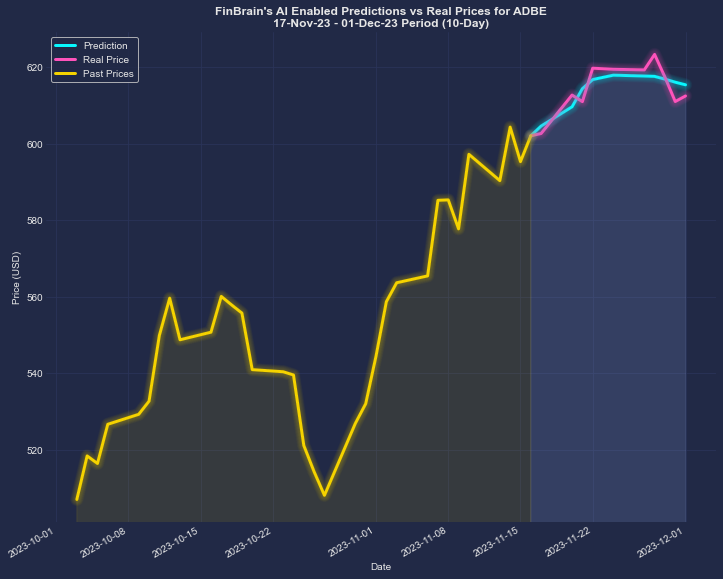Top 10 Tips To Help Assess The Costs And Pricing Of Ai Trading Platforms That Can Predict Or Analyze The Prices Of Stocks.
Pricing and cost of AI-based stock predicting/analyzing trade platforms is crucial to avoid unanticipated costs or hidden fees. Knowing what you pay for and how the pricing structure may be quite different. This will help you make an informed decision. Here are 10 top strategies to help you assess the price and value of these platforms.
1. Understanding the Pricing Model
Subscription: Be sure to determine if the platform charges a fee per month or a year, and what's included in each stage.
Pay-per-use : Verify that the platform charges you according to usage (e.g. requests for trades, for data or forecasts).
Freemium Model: Check to see if the website has a free tier which offers limited options. Premium features are paid for.
2. Compare Pricing Levels
Examining the features that are included in each price tier (e.g. basic professional, professional, or enterprise).
Scalability - Ensure that your pricing tiers match your requirements.
Upgrade flexibility: Discover if you are able to easily upgrade or downgrade your system as your needs evolve.
3. Evaluate Hidden Costs
Data fees. Verify that the platform charges fees to access premium data.
Brokerage Fees: Determine if your platform charges extra costs for trade execution or integration.
API usage. Assess if extra charges are incurred due to API access, or for frequent API use.
4. Demos as well as Trials are Available for Free
Trial period: Search for platforms that provide the opportunity for a free trial or demo of their features before committing.
Examine the limits of a trial trial. Does it contain all features?
There is no commitment option If you do not like the program, you may cancel it without any charge.
5. Look for promotions and discounts.
Annual discounts: Find out whether you qualify for discounts on the annual plan when compared to monthly plans.
Referral programs - Check to see whether there are any discount or credits available for referring new users.
Pricing for institutions If you're part an organization larger than yourself, ask about bulk or institutional pricing.
6. How to Evaluate Return on investment (ROI).
Value and cost: Examine the cost of a platform with its features. For instance, does it aid you in making a better trading decision or help you save time.
Performance track record - Check the platform's success rate or user feedback for an indication of its potential return on investment.
Alternative costs: Comparing the cost of the platform to the cost that may be incurred in the event it is not used (e.g. missed opportunities, manual data analysis time).
Review Cancellation Policy Revision
The cancellation policy should be followed: Ensure you are able to cancel your subscription without penalty, or with no hidden costs.
Refund policy: Find out if the platform offers refunds for unused parts of your subscription.
Auto-renewal. Find out if the platform will automatically renew your subscription. If it does then you'll have to figure out how to unsubscribe.
8. Pricing Transparency:
A clear price page: Make sure your platform provides a thorough and up-to-date pricing page without hidden costs.
Customer support: Contact customer service to clarify any pricing or cost issues.
Contract Terms: Understand the long-term obligations and penalties by reviewing the contract conditions.
9. Check out your competition
Comparing features: Ensure that you're getting the most value and the best platform when comparing it to its competitors.
User feedback: Find out what other people think about the platform to determine if it is worth the price.
Market positioning: Find out whether it is priced as an expensive, mid-tier or budget option and whether it meets your expectations.
10. Estimate the Long-Term cost
Price increases Look through the history of the platform to determine the frequency of raising prices.
Features added: Determine if new features are included in your current plan or need to be upgraded.
Costs for scaling: Ensure that the platform's pricing remains reasonable when your trading or data requirements grow.
Bonus Tips:
Test out a variety of platforms. Test them all with a no-cost trial to test their performance.
Negotiate the price: If you are frequent users or part of a large institution, ask about special pricing or discounts.
Look for free educational tools and resources. Certain platforms offer educational tools or resources that are complimentary.
Following these tips can help you evaluate the pricing and costs of AI analysis and stock prediction platforms. It is possible to select one that fits your budget and provides the features you require. A well-balanced platform will provide you with the best of both worlds: affordability and functionality. View the top inciteai.com AI stock app for blog tips including ai copyright trading bot, canadian ai stocks, ai for trading, best stock advisor, incite, ai options trading, ai hedge fund outperforms market, ai trading app, ai invest, trader ai review and more.

Top 10 Tips To Assess The Risk Management Aspect Of Ai-Based Stock Trading Platforms
Risk management is a key component of every AI trading platform. It helps to protect your investment and minimize the possibility of losses. A platform that has robust risk management tools can assist you in navigating volatile markets, and make informed choices. Here are the top ten tips for assessing risk management capability of these platforms.
1. Evaluation of Stop-Loss & Take-Profit Features
Customizable settings: Make sure you set your maximum take-profit and stop-loss levels for specific trades.
Examine the platform to determine whether it is compatible with trailing stopped, which will adjust automatically as the market shifts in your direction.
Guaranteed stops: Check whether the broker offers guarantees on stop-loss orders that guarantee that your position will be closed at the price you specified, even in volatile markets.
2. Tools to Measure Positions
Fixed amount. Make sure you can define your positions' sizes in terms of an amount that is fixed in dollars.
Percentage of portfolio: You can manage your risk by determining position sizes proportionally as a percentage.
Risk-reward ratio: Check whether the platform can set risk-reward ratios for individual strategies or trades.
3. Look for Diversification Support
Multi-assets trading: Make sure that the platform supports trading across multiple asset categories (e.g. ETFs, stocks options, forex etc.) for diversification of your your portfolio.
Sector allocation: Ensure that the platform has tools for monitoring exposure to different sectors.
Geographic diversification: Verify if the platform allows trading in international markets to spread the geographic risk.
4. Review the margin and leverage controls
Margin requirements. Be sure to know the margin requirements prior to trading.
Find out the leverage limits. You can use this option to manage your risk exposure.
Margin Calls: Make sure that the platform has sent promptly notifications about margin calls in order to avoid account liquidation.
5. Assess the risk Analytics and Reporting
Risk metrics: Ensure that the platform includes important risk indicators, such as Value at Risk, Sharpe ratio, as well as Drawdown for your portfolio.
Analysis of scenarios: See whether the platform allows you to simulate various market scenarios in order to evaluate potential risks.
Performance reports: Check whether you can obtain detailed performance reports from the platform, including the risk-adjusted outcomes.
6. Check for Real-Time Risk Monitoring
Portfolio monitoring: Ensure the platform provides real-time tracking of the risk exposure to your portfolio.
Alerts and notifications - Check that the platform is sending out alerts in real-time when risk events happen (e.g. Margin breaches and triggers for stop-loss orders).
Risk dashboards – Check to see if your platform offers customizable risk dashboards. This will give you a better overview of the risks you're facing.
7. Conduct a Stress Test and backtest
Stress testing - Ensure that your platform lets you test strategies and portfolios under extreme market conditions.
Backtesting. Check whether the platform permits backtesting, which is the application of historical data to determine the risk and the performance.
Monte Carlo: Verify the platform's use Monte Carlo-based simulations to evaluate risk and modeling a range of possible outcomes.
8. Risk Management Regulations: Assess the compliance
Compliance with regulatory requirements: Ensure that the platform is compliant with applicable risk-management regulations (e.g. MiFID II, Reg T, in the U.S.).
Best execution: Verify that the platform follows the most efficient execution methods. Trades are executed at the most affordable price feasible to limit loss.
Transparency. Check that the platform is transparent and makes clear disclosures of the risks.
9. Check for User-Controlled Parameters
Custom risk rules: Ensure that the platform you choose lets you create your own custom risk management rules.
Automated risk controls: Check whether the platform is able to automatically implement rules for risk management in accordance with the parameters you've set.
Manual overrides Determine if you can manually override the risk control system that is automated in a situation of emergency.
Reviews of User Feedback and Case Studies
User reviews: Review user feedback to determine the effectiveness of the platform's managing risk.
Case studies: Search for testimonials or case studies which highlight the platform's capabilities in risk management.
Community forums Find out if there's an active group of traders who share their tips and strategies for risk management.
Bonus Tips
Trial period: Take advantage of a free demo or trial to experience the risk management capabilities of the platform in realistic scenarios.
Customer Support: Ensure that the platform is able to provide comprehensive support in the event of any risk management-related issues or concerns.
Educational resources: Check if the platform provides educational resources or tutorials regarding risk management best practices.
These tips will aid you in evaluating the risk management capabilities that are offered by AI stock-predicting and analyzing platforms. You will be able select a platform that will protect your capital while minimizing the possibility of losses. It is essential to utilize effective risk-management tools to be able to navigate market volatility. Take a look at the recommended ai stock picker url for more recommendations including free ai tool for stock market india, copyright advisor, investing ai, trading with ai, ai trading, ai investment platform, ai stock picker, ai trading, best ai etf, copyright financial advisor and more.

Comments on “20 Handy Ways For Choosing AI Stock {Investing|Trading|Prediction|Analysis) Sites”